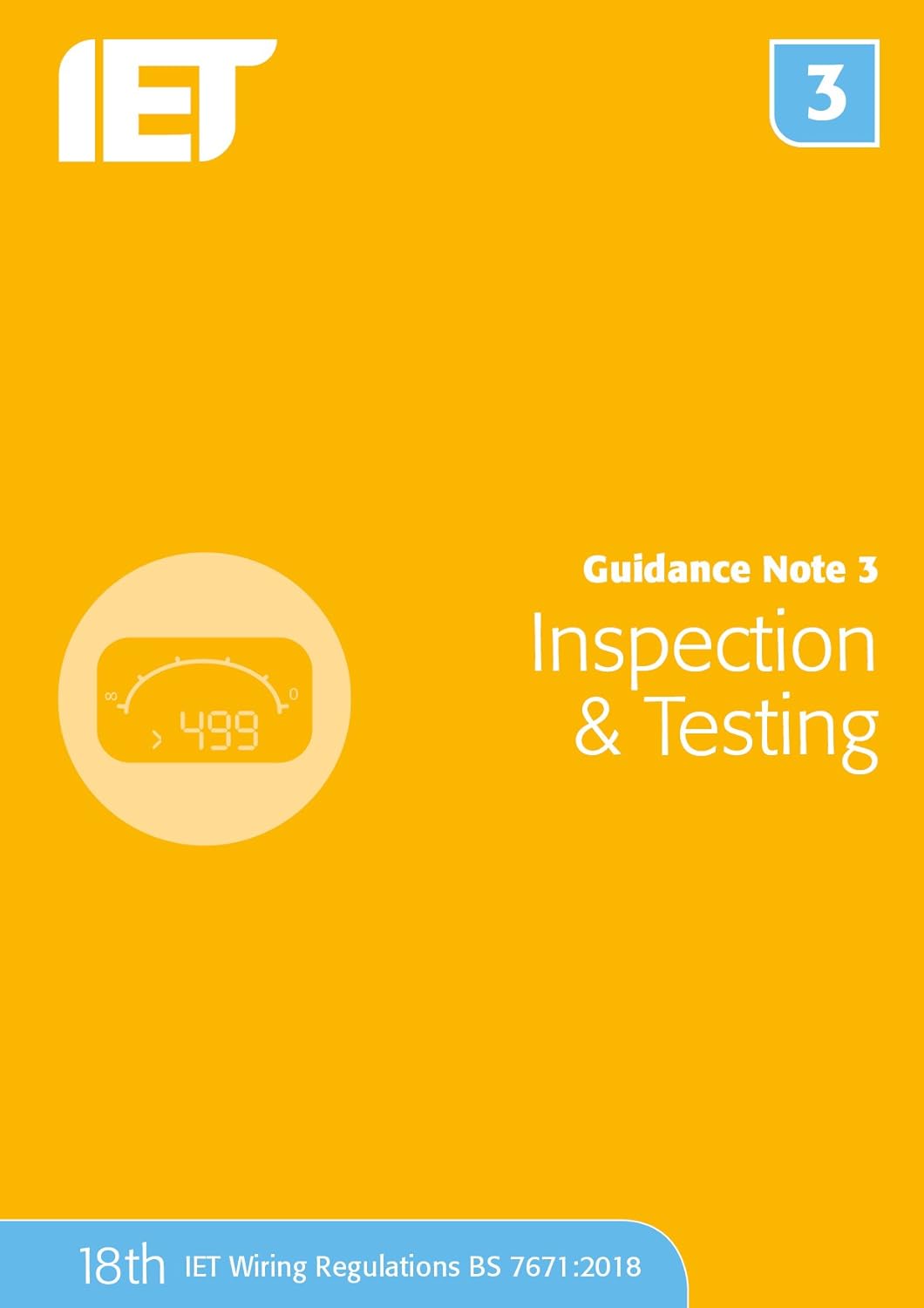About this deal
NOTE 2: Regulation 16 of the Electricity at Work Regulations 1989 requires persons to be competent to prevent danger and injury. The HSE publication HSR25 provides guidance on this.’ Before we look at testing RCDs, it is worth pointing out that the requirements for selection and erection of RCDs have been amended. Regulation 531.3.3 of BS 7671:2018+A2:2022 states that the appropriate RCD shall be selected according to the presence of DC components and AC frequencies. Further, Type AC RCDs shall only be used to serve fixed equipment, where it is known that the load current contains no DC components. In any case I have not heard a valid reason as to why the IET would round up Zs values above the maximum allowed by BS7671 instead of rounding them down if they want to display them to 2 decimal places.
To standardise periodic inspections Appendix 6 of BS7671:2018 has a general list of items to be inspected within an electrical installation. Look at the ‘Condition Report Inspection Schedule’ for additional information. The description of the extent of the installation covered by the report is arguably one of the most important sections to complete as it describes what is being inspected and tested.You can try an experiment for yourself without having to install 60 m of 4.0/1.5 mm 2 for a ring final circuit. We can simulate a ring final circuit using 12 standard value resistors and a multimeter.
They are different terms, but they all mean the same thing, the person carrying out the inspection and testing is required to have the correct qualifications, experience and knowledge. RCD tests may be affected by loads downstream that contain electronic equipment or may incorporate permanent leakage current due to the capacitance of cables where circuit lengths are considerable.
The requirements for testing RCDs have been simplified, a single test is all that is required to show compliance with the minimum requirement laid out in BS 7671:2018+A2:2022. Regardless of RCD type, the test is carried out using an alternating test current, applied at the RCD’s rated residual operating current I Δn, the maximum disconnection time is expected to be less than 300ms for a general non-delay type RCD. For S type time-delayed RCDs, the operating time should be 130 - 500 ms. Other kinds of RCD testing may be useful for fault finding purposes.
With individual circuits energised. Loop impedance (Zs) and for devices if they are present the disconnection times of RCDs with a fault current 1x and 5x their rating, which is usually 30mA. A C3 classification code is recommended in BPG 4 for the absence of RCD protection for cables buried in walls at a depth of less than 50 mm, without mechanical protection. The 2391 course series relates to two complementary disciplines of electrotechnical theory. This is the initial verification of new circuits, and the periodic inspection of existing electrical installations. I’ve also been qualified tutor since 2008 and have taught electrical installation ‘C&G, EAL and Logic’ courses and we’ve been successfully teaching the Wiring Regulations online here at the-regs.co.uk since 2014 and have had hundreds of students pass 18th Edition exam – why not join them today? Recent Posts End-to-end testing and inspection process, concluding with the accurate completion of an official Electrical Installation Certificate.
Lastly, it’s also worth noting that multiple-choice exams can sometimes be a little misleading in terms of difficulty level. Some questions will require candidates to methodically work through a number of sums, formulas and information to arrive at the correct answer. Therefore, responses won’t always come purely down to technical knowledge, and may require considerable time and focus. By calmly and competently applying the right electrotechnical process or algorithm to each option, delegates can offer the correct response through a process of elimination. Written examination All electrical installations designed after the 31 st December 2018 must be compliant with these regulations Very specific requirements are laid down in The Management of Houses in Multiple Occupation (England) Regulations 2006 with respect to properties falling within their scope. Regulation 6 (3) requires, that every fixed electrical installation is inspected and tested at intervals not exceeding five years by a person qualified to undertake such inspection and testing. In similarity to the initial task in the first part of the practical assessment, the periodic inspection section requires candidates to examine a simple installation. Again, this will contain a few demonstration circuits and a single-phase consumer unit.
a person who possesses, as appropriate to the nature of the electrical work to be undertaken, adequate education, training and practical skills, and who is able to perceive risks and avoid hazards which electricity can create.’ Carrying out an inspection of electrical installations is a complex task, the person carrying out the inspection and testing is required to have comprehensive knowledge and experience of different types of electrical installations. The inspector will make an engineering judgement to determine the correct classification code.Any observations noticed by the inspector during the inspection and testing is required to be recorded on an Electrical Installation Condition Report (EICR) and a classification code attributed according to the degree of urgency.
Related:
 Great Deal
Great Deal 